Search results for: 's3040 100 m'
-
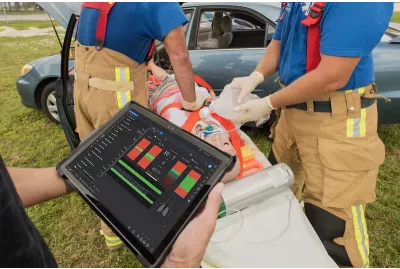 Trauma HAL® S3040.50 - Wireless and Tetherless Trauma Care Patient SimulatorS3040.50.PKLearn MoreThe Trauma HAL® S3040.50 is a wireless and tetherless full-body trauma patient simulator featuring bleeding, pressure-sensitive wounds and trauma limbs, laryngospasms, spontaneous chest rise, bilateral intravenous training arms, and many more capabilities. The completely tetherless design and ruggedized joints make this simulator perfect for point of injury, care under fire, emergency field care, extraction, patient transport, mass casualty, decontamination, and more.
Trauma HAL® S3040.50 - Wireless and Tetherless Trauma Care Patient SimulatorS3040.50.PKLearn MoreThe Trauma HAL® S3040.50 is a wireless and tetherless full-body trauma patient simulator featuring bleeding, pressure-sensitive wounds and trauma limbs, laryngospasms, spontaneous chest rise, bilateral intravenous training arms, and many more capabilities. The completely tetherless design and ruggedized joints make this simulator perfect for point of injury, care under fire, emergency field care, extraction, patient transport, mass casualty, decontamination, and more. -
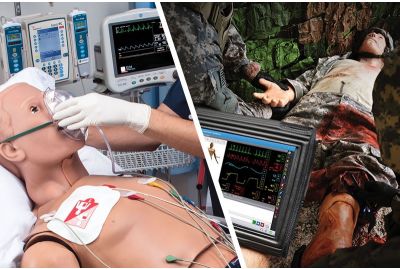 Trauma HAL® S3040.100 - Rugged Trauma Care Patient SimulatorS3040.100.PKLearn MoreThe Trauma HAL® S3040.100 is an advanced, rugged trauma patient simulator engineered to meet the needs of civilian and military medical teams training in real environments. Trauma HAL® features programmable physiology, bleeding wounds, and extended wireless operability for realistic point-of-injury, transport, and in-hospital care training.
Trauma HAL® S3040.100 - Rugged Trauma Care Patient SimulatorS3040.100.PKLearn MoreThe Trauma HAL® S3040.100 is an advanced, rugged trauma patient simulator engineered to meet the needs of civilian and military medical teams training in real environments. Trauma HAL® features programmable physiology, bleeding wounds, and extended wireless operability for realistic point-of-injury, transport, and in-hospital care training. -
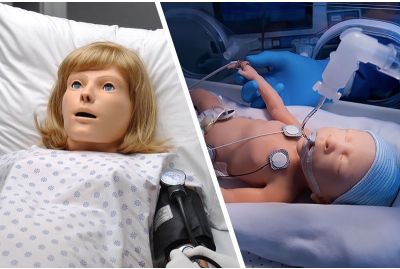 NOELLE® with Premie HAL® S576.100 - Advanced Maternal and Premature Infant Care Simulation PackageS576.100.PKLearn More
NOELLE® with Premie HAL® S576.100 - Advanced Maternal and Premature Infant Care Simulation PackageS576.100.PKLearn MoreThe NOELLE and Premie HAL package is a complete simulation-based obstetric and premature infant care education and training solution for one great price. This turnkey solution includes a Noelle wireless and tetherless childbirth patient simulator, a Premie HAL wireless and tetherless premature infant, two UNI® 3 control tablet PCs, a Gaumard Vitals® patient monitor, Labor & Delivery and Premature Infant Care Simulation Learning Experience® Courseware packages, and accessories.
-
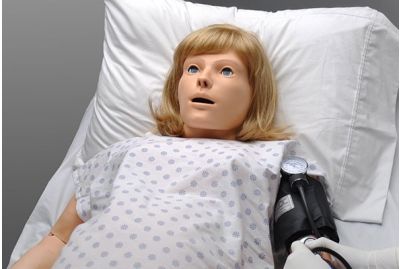 NOELLE® S574.100 - Advanced Maternal Care Simulation PackageS574.100.PKLearn More
NOELLE® S574.100 - Advanced Maternal Care Simulation PackageS574.100.PKLearn MoreThe NOELLE® Advanced Maternal Care package is a complete simulation-based obstetric care education and training solution. This turnkey solution includes a NOELLE® wireless and tetherless childbirth patient simulator, the UNI® 3 control tablet PCs, a Gaumard Vitals® patient monitor, the Labor & Delivery Simulation Learning Experience® Courseware package, and accessories.
-
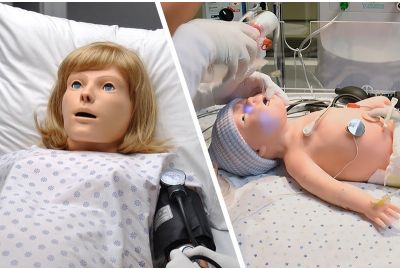 NOELLE® with Newborn TORY® S575.100 - Advanced Maternal and Neonatal Care Simulation PackageS575.100.PKLearn More
NOELLE® with Newborn TORY® S575.100 - Advanced Maternal and Neonatal Care Simulation PackageS575.100.PKLearn MoreThe NOELLE and Newborn TORY package is a complete simulation-based obstetric and neonatal care education and training solution for one great price. This turnkey solution includes a NOELLE wireless and tetherless childbirth patient simulator, a Newborn TORY wireless and tetherless full-term neonate, two UNI® 3 control tablet PCs, a Gaumard Vitals® patient monitor, Labor & Delivery and Neonatal Care Simulation Learning Experience® Courseware packages, and accessories.
-
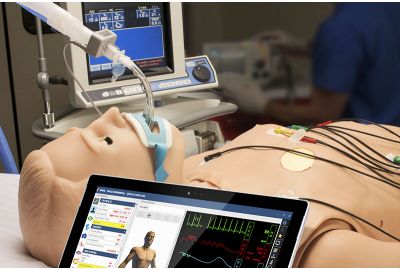 HAL® S3201 Advanced Multipurpose Patient SimulatorS3201.PKLearn More
HAL® S3201 Advanced Multipurpose Patient SimulatorS3201.PKLearn MoreThe HAL® 3201 simulator sets a global standard for medical human patient simulation. Tetherless simulator technology allows the communications, compressor, and power supply to be inside HAL®, eliminating external tubes, wires, and compressors. HAL® operates continuously during transport and training can occur in the working environment. Rush HAL® from the accident scene to the ER, to the ICU, while care providers diagnose and treat his condition using real monitoring and resuscitation equipment. Control HAL® at distances up to 900 Ft. (300 m) and between rooms and floors of conventional buildings. HAL® smoothly transitions between physiologic states in response to commands from a wireless PC.
-
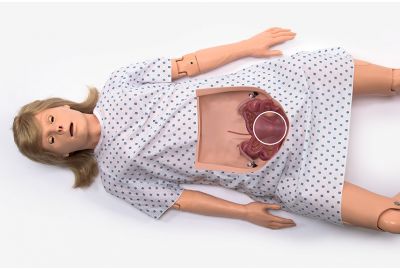 Surgical Chloe™ S2101 - Wireless Surgical Patient SimulatorS2101.PKLearn MoreSurgical Chloe™ S2101 is a wireless & tetherless, full-body patient simulator and course curriculum package designed to aid the training and assessment of the ACGME competencies in six areas, including patient care, medical knowledge, practice-based knowledge and improvement, systems-based practice, communication, and professionalism. Surgical Chloe™ allows participants to practice and hone GYN surgical procedures such as dermoid cyst and ectopic pregnancy removal, hysterectomy, and more using real instruments in a real surgical OR.
Surgical Chloe™ S2101 - Wireless Surgical Patient SimulatorS2101.PKLearn MoreSurgical Chloe™ S2101 is a wireless & tetherless, full-body patient simulator and course curriculum package designed to aid the training and assessment of the ACGME competencies in six areas, including patient care, medical knowledge, practice-based knowledge and improvement, systems-based practice, communication, and professionalism. Surgical Chloe™ allows participants to practice and hone GYN surgical procedures such as dermoid cyst and ectopic pregnancy removal, hysterectomy, and more using real instruments in a real surgical OR. -
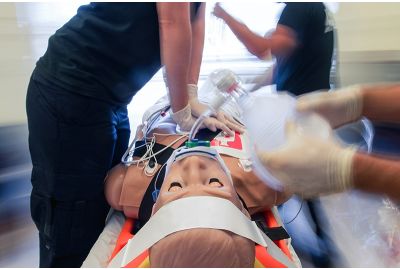 HAL® S1000 - Advanced Life Support and Emergency Care, Wireless Patient SimulatorS1000.M2.PKLearn More
HAL® S1000 - Advanced Life Support and Emergency Care, Wireless Patient SimulatorS1000.M2.PKLearn MoreThe HAL® S1000 is a wireless, computer-controlled full-body patient simulation solution designed for immersive emergency response and advanced life support simulation-based training. HAL allows participants to practice hands-on, using real equipment and in real environments to improve knowledge, skills, and teamwork.
-
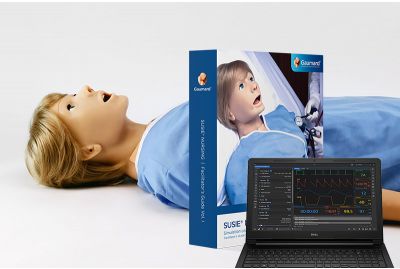 SUSIE® S1001 - Nursing Care Patient Simulator and SLE Education PackageS1001.PKLearn MoreThe new SUSIE S1001 is a wireless and tetherless patient simulator and learning resource package designed to help you deliver the most effective simulation learning experiences (SLEs) possible and ensure learners' success. SUSIE is ready-for-use out of the box for rapid integration into nursing curricula of all levels.
SUSIE® S1001 - Nursing Care Patient Simulator and SLE Education PackageS1001.PKLearn MoreThe new SUSIE S1001 is a wireless and tetherless patient simulator and learning resource package designed to help you deliver the most effective simulation learning experiences (SLEs) possible and ensure learners' success. SUSIE is ready-for-use out of the box for rapid integration into nursing curricula of all levels. -
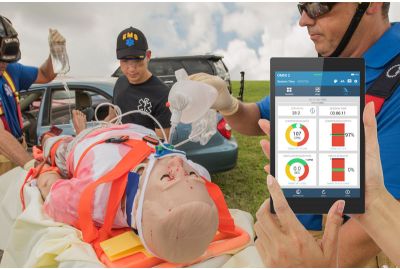 Trauma HAL® S3040.10 - Wireless and Tetherless Point-of-Injury Care Trauma Patient SimulatorS3040.10.PKLearn MoreThe Trauma HAL® with OMNI® 2 is a wireless full-body trauma patient simulator with programmable bleeding and pressure sensors. The completely tetherless design and ruggedized joints make this simulator perfect for facilitating training in care under fire, point of injury care, extraction, tactical evacuation, mass casualty, patient transport, decontamination and more.
Trauma HAL® S3040.10 - Wireless and Tetherless Point-of-Injury Care Trauma Patient SimulatorS3040.10.PKLearn MoreThe Trauma HAL® with OMNI® 2 is a wireless full-body trauma patient simulator with programmable bleeding and pressure sensors. The completely tetherless design and ruggedized joints make this simulator perfect for facilitating training in care under fire, point of injury care, extraction, tactical evacuation, mass casualty, patient transport, decontamination and more.
